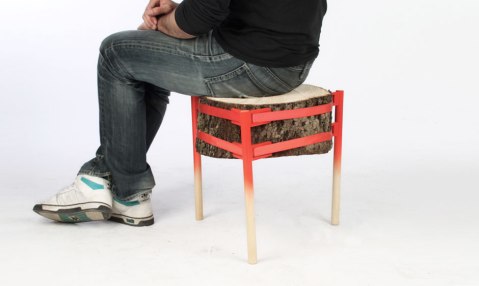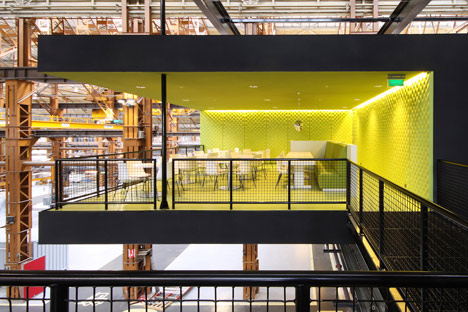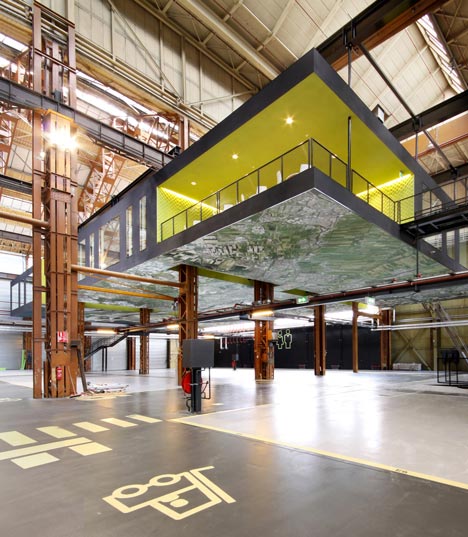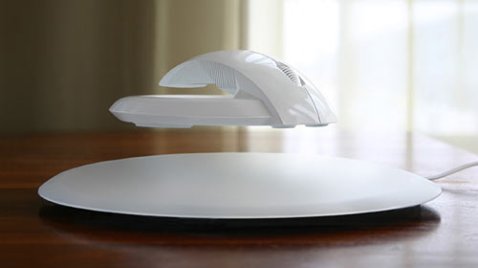The 20-20-20 Principle
Herman Miller is more than just a company that simply wants to make their products more comfortable. They have realized that if they can develop their products to a workers’ needs, then they will be an overall happier, and more productive employee.
The video we’re bringing you today is pretty cool. Not only does it explain how you should use your monitor’s placement, but it also introduces us to the 20-20-20 principle.
The 20-20-20 Principle is very simple: for every 20 minutes that you work, take 20 seconds to focus on an object that is 20 feet away. You will find your day to be much more productive. Check out the video below to find out some more tips on how to become a better, more comfortable employee.
The Stooler: Make Your Own Stool
Ever just really wanted to sit down, but couldn’t find anywhere halfway comfortable to pop a squat? Whether it was a long day at work, a solid workout, or you sheer boredom of standing, we all know the feeling, and we all know how little fun it is.
Well now with The Stooler, you don’t have to worry about such predicaments.
 The Stooler, designed by Andreu Carulla Studio, consists of four wooden legs, and some ratchet straps, and it allows you to turn just about anything into an object to sit on. Pretty revolution idea if you ask us!
The Stooler, designed by Andreu Carulla Studio, consists of four wooden legs, and some ratchet straps, and it allows you to turn just about anything into an object to sit on. Pretty revolution idea if you ask us!
Check out The Stooler website here for more pics and to get one of your own.
Fast Co.Labs
Fast Company is always pushing the envelope. They are truly a multimedia company for the 21st century. Their endeavors have proven time and time again the strength of the coupling of man and his machine.
Now we are lucky enough to witness their next chapter: Fast Co.Labs. The Co.Labs are a place for those who live and work on computers to congregate to bounce ideas off of each other. In a sense it is like an incubator, but it is so much more than that. Watch the video below to see what we’re talking about.
Ergonomic Computer Mouse
If you spend a lot of time on a computer (as many of us do nowadays), you are at risk of developing the dreaded carpal tunnel syndrome. No one like carpal tunnel, and aside from being a contemporary affliction, it really hurts a lot.
Well,Vadim Kibardin of Kidardin Design has designed this levitating mouse, which would not only treat, but could also prevent carpal tunnel.
Obviously, we love ergonomics, and this mouse is such a great idea that we couldn’t NOT share it with you. While the mouse is still in the design phase, the idea itself is awesome, and when we know more about it, we will definitely pass it along!
More pictures at Design-Milk.
Innovation Deck
The Dutch architecture firm Grossman Partners has come up with a very unique way to utilize the space within a former industrial facility in Rotterdam. They have literally suspended another floor of office space above the building’s original floor. The site of the former machine complex is now used as an education and technology center.
 The idea behind the Innovation Deck is one of “a city within a hall” and it even makes for some crazy visual effects. The deck simultaneously looks in and out of place. Luckily the deck is composed of modular units that can be added to or subtracted from in the future if need be.
The idea behind the Innovation Deck is one of “a city within a hall” and it even makes for some crazy visual effects. The deck simultaneously looks in and out of place. Luckily the deck is composed of modular units that can be added to or subtracted from in the future if need be.
 The Innovation Deck adds another 1,000 feet of office and meeting space to the already refurbished complex.
The Innovation Deck adds another 1,000 feet of office and meeting space to the already refurbished complex.
Starcraft II is 21st Century Chess
In another installment of the PLAYMAKERS series by Fast Company, we are introduced to the PC game Starcraft II. Starcraft II is a strategy game that can only be described as chess for the 21st century. While chess has been played the same way for hundreds of years, Starcraft II takes strategy gaming to a whole new level.
In the game of chess, players take turns moving their pieces, while in Starcraft II all of the action takes place simultaneously, allowing players to make a multitude of split-second decisions that can have lasting effects on their gaming experience. Overall Starcraft II has become a teaching tool, and the development of the game has become an exercise in education. Check out the video below to see how
PLAYMAKERS Teaches Physics
In the next installment of Fast Company’s PLAYMAKERS series, game developers are using existing game platforms to teach students physics.
Developers are using the game Portal 2 to teach students physics, which is an extremely unique approach, especially since physics is notoriously difficult to learn. Portal 2 is a very simple game, which when used by the students has shown to actually improve their comprehension of physics.
Check out the video to see more:
Inspiration From John Jay
The video we bring to you today might not do anything for you. You might find it boring, and you might even find it redundant. However, we think that if you’ve got a descent head on your shoulders, you’ll probably find it incredibly inspirational and gainful.
It’s a short, simple soliloquy by designer John Jay and it deals with creativity as a whole. Take a look for yourself:
Now that you’ve seen the video, go out and do something great!
Historia: Game-Based Teaching
Yesterday we blogged about video games becoming prevalent as an actual teaching tool in the classroom. While video games are truly revolutionizing the way children learn, so is game-based teaching.
The video above from the great people at Fast Company, who are always pushing the envelope in terms of multimedia and communication. It is also interesting to note that Historia is being used in middle schools, which are often labeled as being difficult for students socially, as it is quite the “awkward” age.
Come back tomorrow for another installment of PLAYMAKERS from Fast Company.
Video Games in the Classroom
In the 21st century various multimedia applications are now being used as educational tools for students. Some of the most effective have been video games. Game designers and teachers alike are using these video games to revolutionize the way that their students analyze and diffuse information.
One thing that has become very clear is that students have shown to absorb information better when there is discomfort in their learning experience. Instead of boringly churning out information, if there is a small amount of discomfort, it seems to keep students on their toes.
Check out this video below and you’ll see what we mean:
